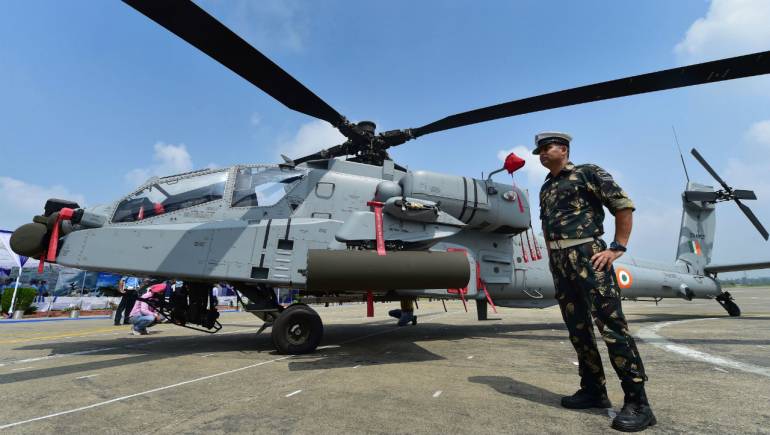
Defence budget hiked up, focus on boosting 'Atmanirbhar' in production

In the backdrop of tensions at the eastern and northern borders of the country, the Modi government has increased the allocation for defence by 9 per cent to ₹5.25 lakh crore in 2022-23, as compared to ₹4.7 lakh crore in the current financial year. The big focus, however, is on augmenting the spending on equipment and infrastructure needed for the armed forces, along with higher emphasis on local sourcing of defence equipment to boost the manufacturing sector through the “Make in India” initiative.
Striving to push its ‘vocal for local’ concept and reduce its dependence on imported defence equipment, finance minister Nirmala Sitharaman has stipulated that 68 per cent of procurement for the defence sector should be from domestic sources in 2022-23. In 2021-22, the limit for local procurement was 58 per cent. The allocation for defence capital expenditure has been increased to ₹1.52 lakh crore rupees in 2022-23, as compared to ₹1.35 lakh crore in 2021-22.
Defence minister Rajnath Singh remarked that hiking the limit for domestic procurement will encourage manufacturing of defence equipment within the country. Apart from reducing dependence on other countries, this will result in higher contribution to GDP and generation of more employment. “…68 per cent of defence capital procurement budget has been allocated towards local procurement. It is in line with the ‘Vocal for Local’ push and it will certainly boost the domestic defence industries,” Rajnath Singh tweeted. Prime Minister Narendra Modi also commented that the move will be a boost for the manufacturing sector, especially small companies.
Apart from boosting domestic manufacturing, the Modi government also intends to open the doors for private sector participation in defence R&D. Private sector players, especially start-ups, and academic institutions will be encouraged to enter this sector by reserving 25 per cent of defence R&D budget to these players. Till now, defence R&D continues to be the domain of public sector organisations like the DRDO.
Also read: A feel-good Budget that skirts around some critical areas
Especially in the case of new age technologies like drones and digital applications, it is felt that the defence sector would benefit from technologies developed by start-ups. “Defence R&D will be opened up for industry, start-ups and academia, with 25 per cent of defence R&D budget earmarked. Private industry will be encouraged to take up design and development of military platforms and equipment in collaboration with DRDO and other organisations through SPV model. An independent nodal umbrella body will be set up for meeting wide-ranging testing and certification requirements,” the finance minister said in her budget speech.
Sitharaman also emphasised that the Union government would continue to focus on boosting domestic manufacturing of defence equipment. “Our government is committed to reducing imports and promoting AtmaNirbharta in equipment for the Armed Forces. 68 per cent of the capital procurement budget will be earmarked for domestic industry in 2022-23, up from 58 per cent in 2021-22”.
With two defence corridors coming up in Tamil Nadu and Uttar Pradesh, she expects this segment to contribute more significantly to the manufacturing sector. Last year, an agreement was inked for production of AK-203 rifles at Amethi in Uttar Pradesh with transfer of technology from Russia. In the long run, the government hopes that defence equipment will be exported from India on a large scale, just like the recent deal to supply BrahMos missiles to the Philippines.
The finance minister also allocated ₹1.20 lakh crore for defence pensions and ₹20,100 crore rupees for civilian expenditure of the defence ministry which goes into administrative expenses like salaries. Preference has been given to capital expenditure while keeping these categories in control. However, the intention of providing better equipment and infrastructure to defence forces will fructify only if the actual utilisation improves.
According to officials, the Indian Air Force, Navy and Army have not been able to fully utilise the allocation for capital expenditure in 2021-22. While efforts are on to spruce up infrastructure, especially roads and bridges, in the eastern border; and modernise equipment utilised by the forces, the capacity to absorb higher financial allocation needs further improvement.


